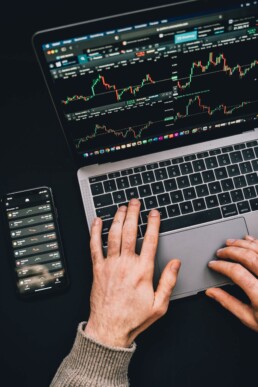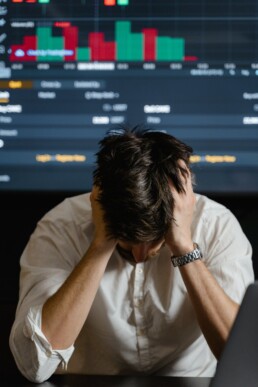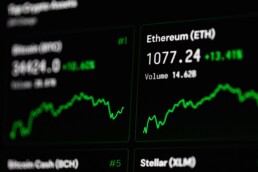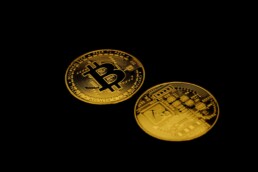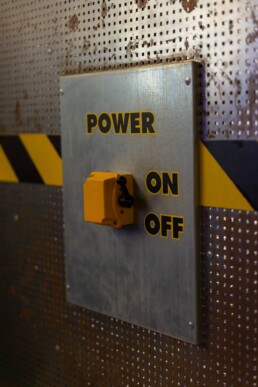Stock Market Index
The CAC40 makes +3%. The SP500 is down 5%.
OK, but what is the SP500 and the CAC40? They are stock market indexes.
A stock market index is a numerical measure of a group of stocks merged together.
Stock indixes are a summary of the value of the stocks they represent. The movements of the index is a good approximation of the changing value of the stocks included in the portfolio over time. There are different methodologies for calculating indexes, depending on the weighting given to the stocks in the basket
This measure is used to monitor the performance of the indicated group of stocks more quickly. In fact, the change in the unit of measurement gives a rough indication of the performance of the market we are monitoring or in which we have invested. In reality the number itself that we see does not indicate much in general and can be taken as a pure point of reference in certain analyses, but what we are interested in is the percentage of movement.
Indices are many and can represent the stocks of a country or a geographic area or an industry sector and investing directly in the index is feasible to get a return from the market.
Some indexes are among the best representations of a country's industrial performance, such as the SP500 for the united states
In contrast, some other list is not as representative because of the characteristics of the country's industrialization in particular. This characteristic can be applied to other countries that are affected by the same of type of industrialization or other types of economies that are more skewed toward particular sectors, such as banking or tourism.
To get a return from these markets you can buy index funds, which is equivalent to buying the total index. Sometimes it does not make sense to buy the individual stock but rather the total sector or country.
An index fund can be a mutual fund or etf that copies the stock composition of the index, this makes the investor, with this product, follow the market trend.
Of course we should not buy random things on the wave of enthusiasm, before we buy a basket we have to make sure what is in that 'index and understand its exposure. If we buy a technology index we will be exposed to all the risks of that sector, whereas if we focus on the Indian index, we will also be exposed to its country risk.
Then we have to consider how these indexes are created and how the various stocks within it are weighted.
5 steps to start investing
Getting started is not particularly difficult if you have a clear path in mind, otherwise you flounder left and right without doing anything, throwing your money away.
Investing needs to have specific goal in mind, whether it is to improve your economic situation or have funds to buy a house or to finance our business. We want to grow our capital so that we can then use it for ourselves.
Step n 1
Check your expenses and understand how you spend.
That is, where does the money go?
Understanding how you spend is the key to cutting unnecessary expenses and saving to start investing.
Let's see it this way, the money you will save will be the gasoline for your investments.
And your investments are like a car, without petrol you just stop and look around.
Now, after understanding how you spend, you have to choose how to allocate your budget.
Many suggest the 50 30 20 rule, which is 50% necessary expenses, 30 discretionary expenses and 20% savings.
You need to be disciplined but this also depends on what fixed expenses you have, such as a home or car loan.
Try to apply yourself on your personal sphere and your situation.
Step n2
Pay off debts.
Having a debt such as a mortgage or car payment is not a big problem, because they are debt that we can consider useful.
At the end of the mortgage you will have a house, we can call it a real estate value.
On the contrary, having a mortgage for an iphone or a television is not very smart.
Surely you can avoid spending that money on consumer electronics or other things that can be considered useless.
In fact, every debt has a cost, and you are paying for your iPhone more than what it costs in the store.
The costs of the debts you have on whatever you have bought must be checked, and if possible pay off these debts ASAP.
Remember we need gasoline for our car.
Step n3
Create an emergency fund.
It seems counterintuitive, cutting debt to have more money to spend on financial assets and then creating a fund with money that we shouldn't touch except in an emergency. Instead it makes sense, specifically for your psyche and for your safety.
In fact, you must be prepared to have fluctuations in your financial portfolio, with whatever asset you have formed it.
An emergency fund lets you know that in the event of any problem in your life, you can have a safety net to draw on.
Think about if you lose your job and don't find one for a few months. How could you live and pay the bills?
3 to 6 months of funds to live without work can be a good start for creating an emergency fund.
You can also make it grow over time, shifting some of your earnings.
The emergency fund will also allow you to have extra security when you go to invest.
Your psyche must be ready to handle the stress of financial positions.
Step n4
Understand if you can invest on your own or if you need help
In this case, you have to be honest with yourself.
Do you know what to do? Can you handle it psychologically?
Investing is not easy and burning an account is very easy.
Your psyche is risk averse and you need to learn to manage it.
Your risk tolerance may be higher or lower, but the pain for losses is real.
You have to understand how to manage anxiety and this leads you to wonder if you can do it alone or if you need a consultant.
If you believe you can do it yourself, then a long, very long course of study awaits you.
But it will enrich you and allow you to understand a lot of things about our world and our society.
Step n 5
Start today, with discipline.
The earlier you start, the better, because with the passing of age the attention decreases and because the longer you stay on the market, the greater your chances of earning.
Discipline requires you not to do things rashly, to remain balanced as investments and never, ever make the famous ALL INNN on the set-up that everyone is pushing during a Hype- Assett period.
Because you will know that it is the stupidest thing to do, especially when everyone is on FOMO.
Hype is the enemy.
The uncertainty of the investment
Today we are going to talk about the aspects behind investments and their psychology.
We are facing the uncertainty about investing in the financial world.
The human being is in the perennial search for security thanks to a natural genetic repulse to risk to make us survive.
Risk aversion in an environment where we can be killed by beasts or adverse climatic conditions is what allowed us to survive thousands of years ago.
Many people have an innate adversion to losses.
Try to think of losing 20 euros. In this case the pain will be greater than the pleasure of having earned the same 20 euros.
This means that these people are totally opposed to certain practices that allow them to increase their portfolio .
In fact, to have an interesting economic return you have to take risks, since risk is the fuel of the potential profit.
It is also true that some zero-risk investments still exist such as bank accounts but which yield practically are below zero.
And these are not at zero risk since there is the risk of bank failure.
Therefore, it is necessary to manage the investment risk.
In the financial world, risk means exposure to the possible loss of money, or the possibility that your investments will drop in value compared to the purchase cost.
The amount of risk we are willing to expose ourselves depends on various factors like volatility.
Volatility indicates an indecision on the price on the part of sellers and buyers, certainly equates to a greater risk that can be justified by the greater possible gain.
Precisely to maximize our earnings and to analyze the risk to which we are exposed, an analysis of possible events that could affect our investments must be made, a sort of exercise to manage some risks to which we may be exposed.
Among the risks that we can easily recognize are:
a rise or fall in interest rates by the central bank, affecting corporate loans;
a credit risk, with debtors unable to pay their obligations;
a sudden inflationary push in a specific country or worldwide;
A possible country risk, as happened with Greece or Argentina;
These last two risks can be placed in a large group that we can call
market risk or systematic risk.
This is a type of risk that can affect all companies operating in a specific country or market.
We are talking about a recession, which destroys all the spending power of the population or an environmental problem that jeopardizes a specific industry, such as a disease that attacks plants destroying them all over the world.
Going more into the details of a specific market we can then talk about the specific risk of a company, like Enron in the United States.
This type of risk refers to a specific company in a national or international market and can be caused by huge scandals, or by the appearance of new international competitors on the internal market or by a new legislative change that worsens our market situation.
Remember that every investment is under this kind of risk and that systematic risk is difficult to predict in the future while specific risk can be eliminated through diversification.
But then there are assets that are not subject to risk, those safe havens where everyone can take refuge.
Yes, they exist and generally the greatest exponent is gold.
However, it should be remembered that gold also has price fluctuations and that in the event of a crisis it could have a certain decline. But here we need to understand how much the drop is, for example if gold falls by 10% in a market that dives into minus 60 or 70% ...
Let's move on to another point of view, moving from investment to investor.
The psychology and preparation of those who put money into any investments are much more important than people think. It is necessary to understand the different risk tolerance of the different people who approach the market.
This tolerance is mainly given by two factors which are the predisposition to risk influenced by one's personality and personal financial culture, to which must be added the ability to manage emotions and the fear of losing one's money.
Managing anxiety and maintaining clarity to better manage the situation are two very important characteristics.
Think what could happen if we panicked at every slightest downtrend or wanted to take home every little profit.
Other factors that can make this situation worse, is your relative financial situation and in which time frame you are investing for your life. Maybe that descent won't change your life, but if you've used all your money on a single asset, it starts to be different.
Financial availability and your working salary are two factors that can make you feel better, combined with a long-term vision.
If we think of a personal safety net like a bank account with a good amount of money and a job with a good salary, a loss of 20% is something that we can expect. A short-term view means that risks and loss tolerance are approached differently.
The risks are generally in a short period of time, and the markets generally recover from the crisis by making new highs in a period of time that is not so long.
One last note aside, the age of the investor is also important. An elderly person is unlikely to get involved with particularly dangerous assets.
Do not focus only on volatility risk, but on real risks, on those things that are too good to be true and try to always have a long-term view.
Risk is necessary, it can be controlled but it cannot be avoided.
Learn more about safety here.
How to buy a coin like Ethereum
how to buy a coin, in this case we will take Ethereum as an example.
First of all you must have a wallet, your choice of whether a software wallet or a hardware wallet.
If you don't know the difference, check our article dedicated to what the various types of wallets are.
After that, find your ethereum address.
After you log into your favorite exchange, check that you have enough funds and make your ethereum purchase.
Go to your wallet page on the exchange, look for your newly purchased eths and withdraw your coins. At this time, you will need the address of your wallet that we searched for earlier.
Enter the address, confirm the transaction and you will see your eth pass from the exchange to your wallet.
All in a very simple way.
The difference between economy and finance
Today we are going to learn what is the difference between economy and finance in our society.
It is a difference that has been thinning lately but which is still present.
We have to start from a well-defined initial assumption, the stock market does not measure the same thing as the economy, they are two connected entities but they represent two separate things.
The financial markets as a whole represent all the stock exchanges in the world and their lists or indices such as the Nasdaq in the United States.
On these indices, stocks, bonds and other financial instruments of that specific country are bought and sold.
The market goes up when the value goes up, and goes down when the value goes down.
So the indices give us an idea of how the market is doing.
If the stock market lists are contained and easily calculated, this is not the case for the economy.
In fact, the economy is much more extensive and difficult to calculate.
A value like GDP ideally indicates a country's spending mass, but investments, exports, imports, household consumption, their debt burden and government spending must also be considered. We are talking about a huge number of variables.
Back to the stock market, this gives us an idea only of the trend of the companies that are listed on that list.
We are talking about a vision that we can define as distorted or very limited.
These listed companies are actually part of the country's economy but there are also a lot of companies that are not listed and are themselves part of the economy.
Most companies in a country are not listed, for various reasons.
A possible collapse of the economy would affect them all in a more or less serious way while a collapse of the stock market should not affect them directly, or rather it could affect them indirectly with regard to any listed partners or suppliers.
In fact, if we change our point of view we will see that most of the people who have a job are part of the economy, but not all of these workers have money invested in the stock market, so a decline in stock has no direct impact on the citizen while a collapse of the economy does.
However, it should always be remembered that the stock market is still important since it has an indirect impact on the economy and on citizens' portfolios. In fact, the value on the stock market is reflected in the banking relationships of companies.
Companies considered of little value on the market, in addition to struggling to survive the competition, cannot access loans and therefore funds for their business.
Returning to the stock market, it should be specified that it may or may not push the real economy.
A rising stock market will give investors a greater propensity to spend, an expense that will be inserted into the real economy circle by increasing wealth. This wealth will allow companies to grow, increasing their staff and their reference markets.
Collect more capital on the market that can be invested in the company itself, without also considering the "wealth effect" given by a rising equity portfolio.
Obviously, all of this is reversed if we have a collapsing stock market, with a slowdown in the real economy.
But this influence between the financial market and the economy is real, the trend of the economy also influences the financial market.
those who work on the stock market base their sales and purchase decisions on what they see happening to the economy and its players in the field.
These two entities are closely linked but not necessarily have to move in the same direction, this is because they focus on two different periods of time.
The financial market has a vision towards the future, those who buy and sell shares do so by thinking about what will happen and how the economy will go in the coming months or years.
So the stock market will grow if there is a belief that the economic world of tomorrow will be better than today.
You can take positions today that will last for years or decades.
The indicators of the economy instead look to the past, that is, they are a snapshot of what it is today, but more precisely yesterday.
Economic indicators can indicate a contraction and at the same time the stock market can grow because investors see a possible recovery of the global economy on the horizon.
Remember that stock market prices reflect investor expectations.
Expectations and not what will happen in the future.
The entities of economics and financial markets are two entities with major complications, which cannot be solved in simple numbers. Always have a balanced approach when investing your money.
ESG Investing
Today we learn how to invest ethically or what it means ESG
As we know, our society is constantly evolving.
Investments need an evolution, in this case giving greater attention to what is sustainable for the planet.
In fact, until now there was no particular attention in investments regarding the ethics followed by companies and the only parameter concerned was the mere profit of money.
Investments defined ESG as Environmental, Social, Governance investing
This definition applies to companies that are in line with the new perception of the modern public attention to social and ecological problems of the planet.
These companies are the ones to keep an eye on and to own if you want to create an ESG portfolio, or ethical portfolio.
Going to see deeply the ESG acronym, this means:
E as Environmental, we consider the pollution produced by the company, energy consumption and the green or non-green footprint that the company itself has, for example in the production of carbon dioxide.
S stands for Social, which includes respect for the rights of the various communities, the provision of fair salaries to all employees without discrimination, aid to minorities and social management in the workplace.
G stands for Governance, which is the management of diversity within the working community.
Now, how can we make sure that we have a state-of-the-art portfolio?
We have two methods, with some differences to apply to our studies on possible assets to buy.
The first method, which we can define as "negative" or "removal", involves our decision to remove from our possible purchasing choices those companies that have areas of interest such as tobacco, weapons, gambling, or are implied in fraud or minority mismanagement stories.
Once this selection is complete, the remaining companies will be our possible purchasing choices without further in-depth studies in this regard.
Otherwise we can use another method that we can define as "positive" or "inclusion".
That is, we seek only actions that give local and environmental benefits or follow initiatives dedicated to improving the world and gradually eliminating their impact on the environment through, for example, the use of only renewable or sustainable forms of energy such as solar and wind energy.
Now chosen the method, you as a small investor or an ESG fund manager, after having roughed up the list of buyable shares, will make a purchase choice based on other technical parameters.
The ESG method is not a standardized system at the moment, in fact it has different criteria and different points of view based on the manager's or purchaser's thinking.
We might be surprised to find some fossil fuel companies considered ESG compliant, this is because they are among the various companies in the segment the most efficient on many parameters such as their excellent impact on the economy of the community where they operate.
Remember that the ESG scores assigned to the various companies can vary a lot due to the difficulty of analysis.
Companies have many partners, they have long and complicated supply chains and everything behind it is difficult to analyze in depth.
This leads us to talk about a phenomenon, like greenwashing or the cleaning of the reports created by the companies themselves.
This implies creating green initiatives that serve exclusively to have a better ESG score but that in reality do not impact on pollution or improve the life of the community.
There may even be ESG scam profiles, in which reports are artfully created for companies that actually have no ecological target.
In short, you would invest in a company that cuddles unicorns on paper, but which in reality unloads the used oil from their vans and truck into the river behind the shed.
So beware of gray areas.
Currently, the ESG profile has become a bit of an hype, so funds and ETFs have been created made exclusively by ESG companies.
This solves the problem of choosing but at a higher economic cost. On the other hand, fashions always cost a little.
Also be aware that ESG criteria limit your diversification, creating greater investment risk.
In short, we find ourselves at the end of a clash between ethical investing versus traditional investing
However, what concerns the ESG method can lead companies to make changes to their production and management methods, even leading them to be ahead of the legislation that will change in the future.
Customers themselves are also more likely to buy ethical products when they know about them.
How to buy a cryptocurrency - Rookies Step
Today we are going to see how to buy a cryptocurrency in 3 simple steps.
phase 1 - Research:
Before doing anything you have to find out what you want to buy.
Which seems trivial, but it's not so easy to find because the crypto market offers a disproportionate number of coins.
First of all we need to understand if we want to buy a coins with a glorious past or a coins that have just come out on the market.
We need to make this research, which can also be based on suggestions given by the media or friends.
Be careful in this case not to be fooled by possible scams.
Analyze the situation of the coin on a graphical level and everything that revolves around it.
phase 2 - SAFETY
Once you have chosen the coin you want to buy, the first thing to do is find a secure wallet and create it.
Learn more about safety here.
step 3 - buy the coin
Open the exchange and press the BUY button.
Now some recommendations
Always do extensive research on the coin you are analyzing and if someone has suggested it to you, try to understand if it is a disinterested suggestion or not.
Obviously NEVER follow the hype.
The hype invariably leads to entering at inflated prices and then losing a lot of money. Enjoy the hype by standing at the window.
Remember that wallets are programs to hold your coins so pay attention to the different types of wallets and different types of addresses.
If you get the wrong address you have lost your coins.
Bitcoin halving in May 2020
The bitcoin halving is an event that occurs every about 4 years and halves the remuneration of closing a block of the Bitcoin blockchain. It is one of the main features of bitcoin monetary management.
In order to better understand what we are talking about, however, we must review 3 fundamental points which are:
Bitcoin blockchain
Mining
And the total supply of money
Talking about the BlockChain, it is a live record of all bitcoin transactions. The blocks are made up of the transactions within them, and the blocks are linked together in an indissoluble way.
The block is created when a defined number of transactions are made and the block can contain a maximum number of that transactions. Reaching this number, the block is closed and added to the block previously mined and linked to it.
When a Bitcoin transaction occurs, the data is communicated to the network of computers that validate the transaction, add the transaction to the bitcoin ledger and transfer the ledger change to all computers on the network. Since there is a maximum of data that can be saved in a block, a block is closed approximately every 10 minutes
Mining is how transactions are verified within the coin network. The verification and creation of the blocks is created by the miners. Each group of transactions has a cryptographic hash of the previously published block and this connects all to the previously created blocks creating the blockchain. To accept a new block on the network, miners are required to follow a proof of work system that involves the creation of a new cryptographic hash to add to the new block. To be added to the register requires the creation of a new single hash which will go through a validation process and then will be passed to the next block and so on. To create a new hash, miners compete with each other using the computing power of their computers to be the first to have the 64 digit hexadecimal number or hash that is at the same target difficulty level as the network.
The thing to understand is that the miners are remunerated at the closing of each new block with new bitcoins created by the system and by the transaction fees, which are already circulating btc. The rewards are created to incentivize miners to participate in the bitcoin blockchain.
Learn more about Mining here..
The amount of money.
Bitcoin was created as digital gold. Satoshi deliberately created bitcoin with characteristics similar to the physical gold. The principle of mining bitcoin is similar to gold mining, which is long and difficult. Another feature is the maximum amount of bitcoins that can be created which has been programmed to be 21 million. This number was created to copy the inflationary stability of gold. In this case, the term inflation is used for the growth of the amount of money that is not covered by gold in a gold standard.
In the modern way of understanding the term inflation, bitcoin is deflationary because his purchasing power grows over time. Compare it to the gold extraction profile where in the future the cost of extraction will be increasingly higher and more difficult and therefore the previous quantity of gold extracted will increase in value because no more can be produced at low prices.
In the old concept of inflation, bitcoin is inflationary because, not being covered by gold, the quantity of bitcoin grows as the creation of blocks by miners increases. There are now 18 million in circulation. At the current rate, the last bitcoin will be created in 2140
Let's go into the halving detail
The halving referred to the bitcoin blockchain is the reduction of the closing reward of a block for miners to half the previous number. The current reward is 6.25 bitcoins per block.
The halving takes place every 210,000 closed blocks and therefore more or less every 4 years since a block is closed every 10 minutes. Initially, the block reward was 50 bitcoins, which dropped to 25 in 2012 and then 12.5 in 2016
But why does halving happen? Satoshi planned halving to lower bitcoin monetary inflation. In addition, the technological advancement factor of mining machines is also considered and for this there is an increase in the difficulty of creating new blocks to lower the validation speed.
With 12.5 bitcoins per block and 10 minutes of build per block, around 1,800 bitcoins are created daily. After May 2020 these dropped to 900 bitcoins per day.
Now returning to the previous parallel with gold.
It is considered one of the best stores of value due to the fixed presence and its scarcity which is imposed by nature.
The bitcoin algorithm is created to make it scarce. So as the demand for bitcoin grows, the value will grow. There have been major rises in btc prices months after each halving, but this is a trading strategy that you may or may not consider.
Bitcoin as it is created in its algorithm, is made to be scarce and therefore grow in value as long as people like you and me believe in its intrinsic philosophy.
Monero
Today we are explore a crypto coin that works really good on privacy.
Let's talk about Monero.
Monero is considered a Private decentralized crypto currency, a decentralized coin that bases its story on privacy and not on anonymity.
It is necessary to define these two different concepts.
The concept of Privacy in cryptocurrencies is based on the fact that you as a user do not want other subjects to know what you are doing. The action you do must be unknown, but the identity of the person who performs it is public.
In the other side, anonymity means that it doesn't matter if other users know what we're doing, but these users don't know who is doing these actions. In this case we have Public Actions and Unknown Identities.
If we take for example the most famous cryptocurrency in the world, namely Bitcoin, we would discover that it is not private. The actions made by users are Totally visible on the blockchain but the identities are anonymous. In reality partially anonymous, or rather pseudonym.
Monero, on the other hand, is a private crypto that does not expose who sends money, how much it sends and to whom.
The transactions are traceable and the subjects who benefit from them cannot be indicated. It is not possible to understand who the transaction started from or connect them with others.
The first thought of all very often is that with such coins, only Criminals can benefit from it. But that's absolutely not true.
Monero was created for those who want to maintain their personal privacy and security, for those who do not want to be tracked by the big data of the big companies of the internet age in their routine behaviors.
Monero is also a great way to Cover the presence of a large personal btc build-up that could be attacked.
Monero has a possible use also for market predictions.
If we knew the addresses of the exchanges, we could monitor the quantities of coins entering and leaving these addresses, using this information to create long or short strategies based on our analysis.
Monero then solves the question of the fungibility of a traceable currency.
Each coin or cash note, in the real world, is the same as the other and must not be of interest to you where it comes from. We know from many newspaper articles that some of the bills we handle to buy bread may contain traces of drugs or have been used to buy other illegal materials.
However, in the bitcoin blockchain you can trace the path of each coin since its creation, so it could happen that some government agency knocks on your door in case of some investigation. All this is pure abstraction but who knows, in theory it can happen and that is why virgin bitcoins exist
A completely private coin like Monero has a complete fungibility like the 50 euro just out of the ATM and does not have this problem.
The difference between other private coins such as Zcash and Dash is that these offer the option of private transactions while Monero only offers private transactions.
The monero protocol works by obfuscating the three parts of the transaction. So Who sends, who receives and the total amount of the transaction
The system is created to obscure those who send money via a system called ring signatures. whoever makes a transaction has their signature mixed with signatures of previous transactions, creating confusion and the inability to trace the starting address of the transaction.
The amount sent is obfuscated through the Ring C T or Ring Confidential Transaction, where the sender sends only a small piece of information and this is enough to verify that the amount is legitimate. I will not go into the technical details as they are very complicated, but you can find everything on the official website of monero.
The recipient of the transaction is protected by the so-called Stealth Adress, in fact when it is sent to a public address, in reality I am sending to another address of unique use that is derived from my public address.
This creates a separation between addresses and only my private key will be able to use the funds sent to my address
Monero is a Proof of work blockchain and CryptoNight is its algorithm
Monero can still be mined not only from very powerful PCs but from PCs of normal use and there is no limit to the creation of coins.
Learn more about Mining here.
Mining, staking and forging for noobs
We often talk about mining, mining farms and energy consumption of cryptocurrencies. But what is mining in 4 simple words?
As we have already read, the blockchain is made up of concatenated blocks, inside which data or financial transactions and payments are written.
In order to avoid scams, counterfeits or even tecnical errors in payments, the data contained in the blockchain must be verified and this is exactly what mining is about.
Mining represents the verification procedure that is carried out by exploiting the computing power of the computers owned by the individual miner or by the mining farm. A mining farm is nothing more than a place, often a warehouse, with a very large number of computers that work and produce blocks.
Once a block verification process is complete, the miner who created the new block will be paid for his verification work. Mining keeps the blockchain alive.
To validate transactions within a blockchain network There are several systems implemented to achieve consensus
A "blockchain protocol" is a common term for consensus methods.
Some of these require investors to purchase physical mining equipment, while others require no physical hardware and only possession of coins.
Let's see the details aboud different consensus methods:
- PoW: Proof of work - This type of consensus is generically called mining and consists in the creation of computational power thanks to mining rigs formed by serialized graphics cards. This computational ability solves the coin algorithm and creates the blocks. Bitcoin is based on this system, which is not particularly eco-sustainable.
- PoS: Proof of Stake - the type of consensus to create blocks is defined staking and is based on the possession of a large number of coins that, when placed in staking in one's wallet and therefore not available on the market, allow the owner to mine the blocks of this blockchain. Ethereum is based on this method, which is greener than proof of work
- DPoS: Delegate proof of stake this type of consensus for the creation of blocks is defined forging and is based on delegates voted by the community of coin owners. Lisk and rise work with this system, which is as eco-sustainable as proof of stake.
In DPOS systems, forging is another way to mine coins in order to validate their transactions and put new money into circulation. This system consists of 101 delegates located around the world who keep a node (server) online where the coin client runs.
This software allows you to maintain the decentralized network, validate transactions, issue new money into circulation and reward delegates for their service. Delegates don't have to be 101 but can be 51, 201, 301, 501, etc. according to the needs of the network. To become delegates there is a voting system based on the amount of money owned (stake).
If you want to become a delegate you need to reach a sufficient number of votes to be able to enter the top 101 (approval).
The DPoS (Delegated Proof of Stake) system is a method aimed at ensuring a network of digital tokens that takes place by processing transactions and achieving distributed validation inherent in the ownership of money without the need for a central authority.
This system represents an evolution that started from PoS (Proof of Stake), also developed in order to reduce costs and the inefficiency associated with the consumption of electricity typical of PoW (Proof of Work) systems, used for example by Bitcoin.
Mining how to do
This block creation can become a profitable business if done with the proper criteria. Obviously we are currently talking about large initial investments in material and hardware.
Before starting, however, we must understand that the two main problems you will encounter will be the exploitation and consumption of the hardware, which will shorten its useful life, and the energy costs given by the electricity bills, which will skyrocket compared to a normal household use. . After that it must be said that each coin is different and that some coins in particular require specific hardware.
Let's see how to mine
The first idea that comes to mind is to use our home PC, or an old laptop set aside in some dusty closet. Old hardware could be an obstacle to profitable mining given the possible low computing power if you use old hardware.
In this case, the mining of coins that are at the beginning of their life and that do not require particular computing power should be considered. But dont put to much hope in that solution.
A second solution can be to participate in a Mining Pool. Basically you participate with your hardware and your computing power in a group where other people gather computing power to undermine. The large number of devices made available means that the possibility of mining blocks in the blockchain is much higher and therefore potentially profitable. The proceeds will then be divided in proportion to the computing power made available. You will have againt the tipical two problems of energy cost and consumption of the hardware, and in addition there is the possible lack of transparency of the group of miners, who could remunerate the individual less than due, cheating him.
A third way could be to rent computing power through CLoud Mining services, services that provide dedicated paid packages for a defined period of time. Since you do not operate with your own hardware, the cost of wear and energy is reduced, but these are replaced by the cost of renting the computing power. In this case, however, there is the possibility of being scammed on the amount of coins that are recognized by the service for the same hashing power rented, a quantity of coin that over time becomes less and less, justified by the growing difficulty of extracting the coin.
Finally, a fourth way is to go big and create your own mining farm, with a lot of networked computers that mine our crypto currencies. In this case we are talking about very high budgets, well over 200 thousand dollars.
In this case, we must take it into our head to become entrepreneurs, so first of all we will have to think about locating the farm in a country with a low cost for electricity. Later we will have to think about what to mine, because for each coin or type of coin there are different hardware that are more suitable. Mining Bitcoin or ethereum is not the same thing. And let's remember that we have to mine a profitable coin, which is not so obvious today.
The supply of hardware for the creation of the farm will be a problem to consider given its possible scarcity and cost, and also its replacement given the premature wear that we will encounter.
We will also need at least one or more professionals dedicated to the management and replacement of parts.
Since the farm has to operate 24/7, it will be a long and demanding job. Creating a farm is not easy and not always profitable, in fact these are general indications. Many farms have been opened and closed in a short period of time not only due to the inability of the entrepreneurs but also due to the volatility of the market. It is a difficult market and it is necessary to have very in-depth specific knowledge, both in the technological and in the economic field.
Cryptocurrencies to be mined.
If you have decided to dive into the world of mining, you must know that it is important to carefully choose which currencies to focus your efforts on, in fact, depending on the currency chosen, mining may require specific hardware or even more or less power. Furthermore, with a view to evaluating the investment, it must be considered that the trend in the value of the currency (heavily influenced by the progress of the underlying project and the size of the community) affects the results.
What if the miners suddenly stopped?
What if miming no longer generates profits? That is, what would happen if the revenues did not cover the costs of the equipment and the electricity used and the miners decided to stop or switch to another currency? Is it true that without miners, Bitcoin would stop working or become too slow?
No it does not. a blockchain continuously adapts its criteria to keep the creation rate constant. If there were 90% fewer miners, then 90% fewer calculations would be needed to approve a new block, and the operation would not be affected.
The absolute value of the reward for a new block decreases over time, all programmed according to the rules that govern Bitcoin. During the first 4 years of its creation (2009-2012) the reward was 50 bitcoins
However, in the event that the miners all stop their activity, the blockchain would stop and consequently it would no longer be possible (until the mining activity is resumed) to carry out any transactions or add blocks to the blockchain.
Learn more about Mining from an investor perspective here.



